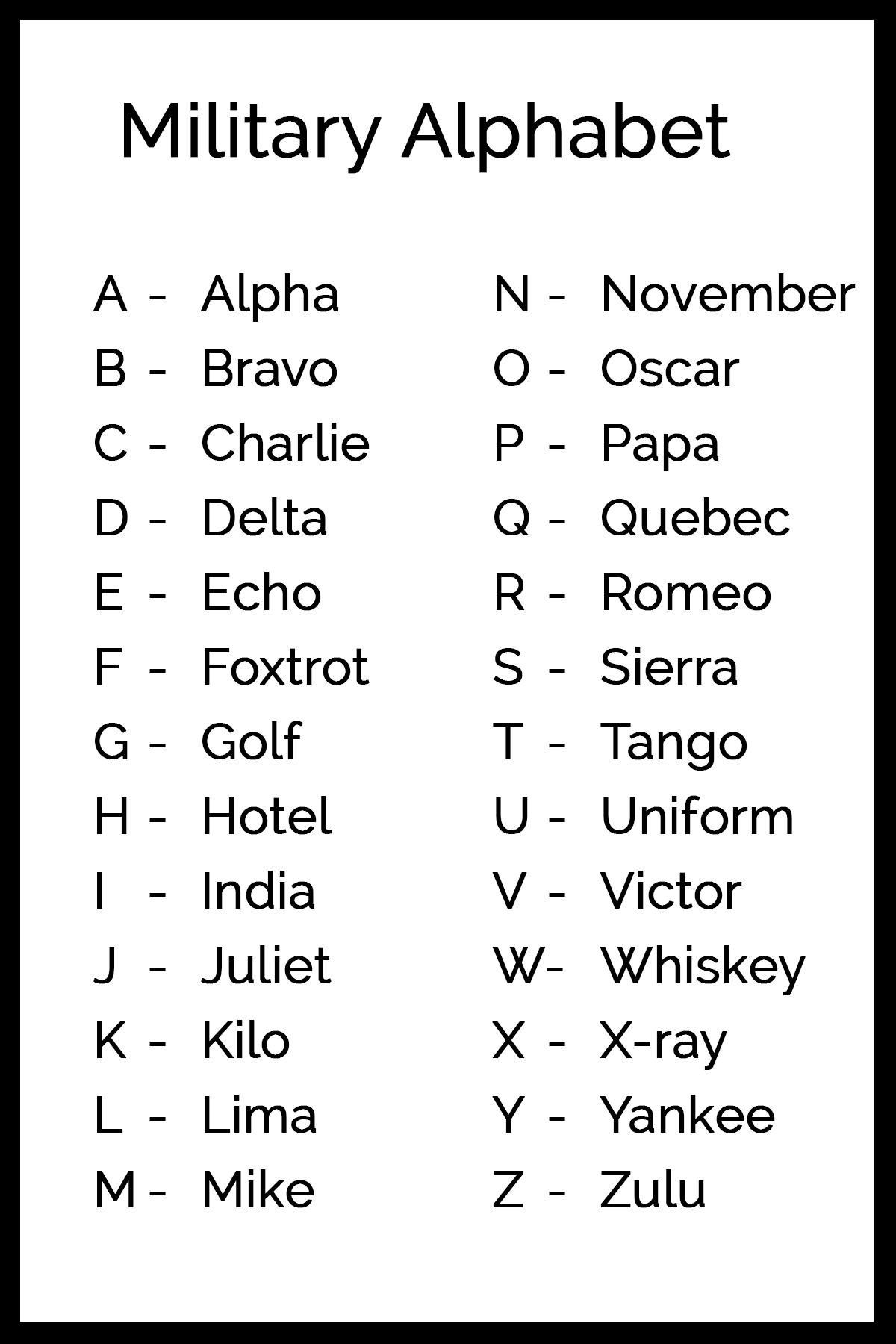Table of Contents
Alphabet In Army Code – The Article Will Explain To You About Alphabet In Army Code. You may have watched movies with war themes and listened to points such as “Charlie,” “Tango,” or “Foxtrot.” Have you ever questioned regarding what these words suggest? Ends up, they are actually unique code language that’s typically described as Military Alphabet. The language is used by Military participants with the purpose to make their communication clearer or just a slang word.
Plainly, practical communication is a essential part of various operations of the Military. The Military of the United States is currently adapting NATO phonetic alphabet system that’s also understood IRSA (International Radiotelephony Spelling Alphabet).
What Is Military Alphabet?
The full Alphabet In Army Code are consisted of 26 code– for each and every of the 26 common Latin alphabets. They act as interaction devices that not only known or can be used by Military participants however additionally civilian individuals in order to avoid mistakes in punctuation when interacting over devices such as phones. The alphabets, the Military likewise embraces other codes of interaction such as shortcodes or jargon words.
These unique alphabets are in fact formally called as IRSA (International Radiotelephony Spelling Alphabet) as stated above and they were established by International Civil Aviation Organization (ICAO) with the function of lowering discrepancies of pronunciation that may take place over spoken radio communication. These phonetic alphabets are made use of by NATO. Military members use these alphabets to produce phrases, shorthand, or codes.
Why Military Alphabet Is Utilized?
There are a lot of letters in the language of English that sound quite similar when verbally stated, as an example, “B” and “D”, or “M” and “N.” The works of sending places, goal status, codes, or any other vital details can be disturbed if there are blunders in analyzing the sent out message, so the Alphabet In Army Code are made use of. As an example, if a person were to send out direction to the “Building of MDG”, after that they may connect it with Military Alphabet by stating “Building of Mike-Delta-Golf.”
When lugging operations related to the Military can be a distinction in between life and death, the importance of interaction clearness. Take, for instance, a soldier wants to educate about the success of the finished mission, then the squadron is mosting likely to report back to the headquarter by stating “Alpha” or “Bravo” to substitute the initial and also second letters in the alphabet. As an alternative, they might claim terms like “Oscar Mike” to report concerning the start of a relocation of a particular team.
How Military Alphabet Is Made Use Of?
Military phonetic alphabets are the collection of words that made use of in messages via telephone, radio, or encrypted tools to identify letters. The alphabets may also be indicated with other techniques such as Morse Code, lights, or flags.
The approved codes are talked with replace letters when communicating. For instance, if you wish to claim “Army” after that you may substitute words by meaning it with Military Phonetic Alphabet as well as state “Alfa Romeo Mike Yankee” rather. Throughout goals of the Military, these phonetic alphabets are utilized to communicate the command chain or to educate the certain objective phase that has been completed.
Hopefully, the article about Alphabet In Army Code is useful for you.
The Complete List of Alphabet In Army Code
| Character | Code Word | Pronunciation |
| A | Alpha | AL-FA |
| B | Bravo | BRAH-VOH |
| C | Charlie | CHAR-LEE |
| D | Delta | DEL-TAH |
| E | Echo | EKK-OH |
| F | Foxtrot | FOKS-TROT |
| G | Golf | GOLF |
| H | Hotel | HO-TELL |
| I | India | IN-DEE-AH |
| J | Juliet | JEW-LEE-ETT |
| K | Kilo | KEY-LOH |
| L | Lima | LEE MAH |
| M | Mike | MIKE |
| N | November | NOH-VEM-BER |
| O | Oscar | OSS-CAR |
| P | Papa | PAH-PAH |
| Q | Quebec | KEH-BECK |
| R | Romeo | ROW-ME-OH |
| S | Sierra | SEE-AIR-AH |
| T | Tango | TANG-GO |
| U | Uniform | YOU-NEE-FORM |
| V | Victor | VIK-TER |
| W | Whiskey | WISS-KEY |
| X | X-Ray | EKS-RAY |
| Y | Yankee | YANG-KEE |
| Z | Zulu | ZOO-LOO |
